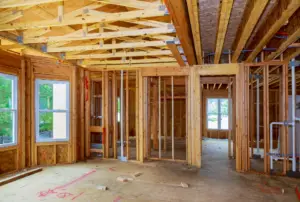After completing a thorough building and pest inspection for a property you are interested in, it is crucial to understand the next steps in the process. The inspection report provides valuable insights into the condition of the property, including any structural defects, pest infestations, or potential safety hazards. Armed with this information, you can make informed decisions regarding repairs, negotiations, and ultimately, the finalization of the purchase agreement. In this article, we will outline the essential steps you should take after a building and pest inspection to ensure a smooth and successful transaction, while prioritizing your safety and financial well-being.

What happens after building and pest inspection
After a thorough building and pest inspections, the moment of truth has arrived. You might feel a bit nervous, but there’s no need to worry because the building and pest report is here to save the day. This report provides a detailed rundown of any issues found during the inspection, so you’ll know exactly what needs to be fixed before moving forward. Once you have the report in hand, you can discuss any concerns with your real estate agent or the current property owner. Don’t let a building and pest inspection stress you out – just lean on the experts and let them guide you through the process.
1. Understanding the Building and Pest Inspection Report
1.1 Importance of the Inspection Report
So, your building and pest inspection is complete, and now you have a hefty report in your hands. You might be tempted to toss it in a drawer or use it as a paperweight, but hold on a second! This report is like a treasure map that reveals the hidden secrets of your property. It’s your key to uncovering potential issues that could cost you big bucks down the road.
1.2 Reviewing the Findings and Terminology
Okay, let’s admit it. Building and pest inspection reports can sometimes read like they were written in a secret code. You’ve got terms like “rising damp,” “subfloor ventilation,” and “timber decay.” But fear not! Take a deep breath, grab a cup of coffee, and take the time to go through it line by line. If something doesn’t make sense, don’t hesitate to reach out to the inspector for clarification.
1.3 Identifying Potential Issues and Red Flags
As you comb through the building inspection report, keep an eye out for any red flags or potential problems like major structural defects. Is there evidence of termite infestation? Are there cracks in the foundation? Is the roof one gust of wind away from collapsing? Identifying these issues early on will help you make informed decisions about your potential investment.
2. Evaluating the Inspection Findings
2.1 Assessing the Severity of Defects
Now that you’ve deciphered the written report, it’s time to play the detective role and assess the defects’ severity. Some issues might be minor and easily fixable with a little DIY action, while others could be serious enough to warrant professional intervention. Knowing the extent of the problems will help you determine the property’s overall condition.
2.2 Determining the Safety and Structural Integrity
Safety first, my friend! When it comes to a building, you don’t want any surprises that could compromise the structural integrity or put your loved ones at risk. Pay close attention to any findings related to the foundation, electrical systems, plumbing, and other critical components of the property.
2.3 Understanding Pest Infestation and Damage
Bugs, bugs, and more bugs. Nobody wants uninvited creepy crawlies taking up residence in their dream home. Be on the lookout for any signs of past or current pest activity. Termites, in particular, can wreak havoc on a property, causing extensive damage that could cost a fortune to repair.
3. Prioritizing and Planning for Repairs
3.1 Categorizing and Prioritizing Repairs
After evaluating the inspection findings, it’s time to put on your project management hat and prioritize those repairs. Identify which issues require immediate attention to ensure safety and prevent further damage. Categorize the repairs into “must-do,” “should-do,” and “nice-to-do” to help allocate your resources wisely.
3.2 Estimating Repair Costs
Now comes the fun part: crunching numbers! Assess the potential repair costs associated with each item on your to-do list. It’s important to be realistic about your budget and factor in any unforeseen expenses. Remember, it’s better to overestimate than to run out of cash halfway through the repairs.
3.3 Developing a Repair Timeline
Time is of the essence, my friend! Plan out a repair timeline to ensure that you tackle the most critical repairs first. Consider the availability of contractors or specialists, and allow for any potential delays. A well-thought-out repair timeline will help you stay organized and keep your project on track.
4. Seeking Professional Advice and Quotes
4.1 Engaging Building and Pest Experts
Unless you’re a superhero with a toolbox full of superpowers, it’s time to call in the experts, like a qualified inspector. Engage professionals specialising in building repairs and pest control to get their opinions and recommendations. They’ll provide valuable insights and help you easily navigate the repair process.
4.2 Obtaining Multiple Repair Quotes
Now, let’s talk money. Obtain multiple repair quotes from different contractors to ensure you get the best bang for your buck. This will help you compare prices and give you an idea of the scope of work involved. Don’t hesitate to negotiate and ask questions. After all, it’s your hard-earned money we’re talking about!
4.3 Verifying Credentials and Experience
Last but not least, remember to do your due diligence. Before hiring any contractor or specialist, verify their credentials and experience. Check for licenses, certifications, and insurance to ensure you work with qualified professionals. Online reviews and recommendations from friends or family can also help make an informed decision.
Remember, after a building and pest inspection, it’s crucial to take action and address any issues promptly. By understanding the report, evaluating findings, planning for repairs, and seeking professional advice, you’ll be well on turning your dream property into a reality.
5. Negotiating with the Seller or Real Estate Agent
5.1 Understanding Your Negotiating Power
When it comes to negotiating after a building and pest inspection, knowledge is power. Understanding the results of the inspection gives you a solid foundation for negotiations. Knowing the extent of the problems can help you gauge your negotiating power, whether it’s structural issues or infestations.
5.2 Presenting the Inspection Findings
Now that you have the pre-purchase building inspection report, it’s time to present it to the seller or real estate agent. Approach the discussion with a clear and concise presentation of the findings, highlighting any major issues that need attention. Remember to keep your tone professional and factual, avoiding any emotional outbursts that may hinder the negotiation process.
5.3 Negotiating Repairs or Price Reduction
Once the seller or real estate agent knows the inspection findings, it’s time to discuss how to address them. You have two main options: negotiating for repairs before closing or requesting a price reduction to account for the necessary repairs. Be open to dialogue and flexible, aiming for a mutually beneficial agreement.

6. Finalizing the Purchase Agreement
6.1 Including Appropriate Contingencies
Before finalizing the purchase agreement, include contingencies that protect your interests. These may consist of contingencies related to repairs, pest control, or further inspections. Including these contingencies allows you to back out of the deal if the necessary repairs or treatments are not adequately addressed.
6.2 Documenting Agreed-upon Repairs
Once negotiations are settled, it is crucial to document the agreed-upon repairs. Be specific about what needs to be fixed, who will be responsible for the repairs, and the timeline for completion. Putting everything in writing ensures that both parties are on the same page and provides a reference point.
6.3 Securing an Appropriate Timeline
While negotiating repairs, securing a realistic timeline for completion is essential. Discuss with the seller or real estate agent to establish a timeframe that works for both parties. Understanding the time required for repairs allows you to plan accordingly and avoid any unnecessary delays in the closing process.
7. Organizing Inspections for Repairs and Treatment
7.1 Scheduling Repairs with Contractors
Once the purchase agreement is settled, it’s time to move the wheels and schedule the necessary repairs. Find reputable contractors who specialize in the required repairs and coordinate with them to schedule the work. Clear communication and prompt action can help ensure the repairs are completed efficiently.
7.2 Coordinating Pest Control Treatments
If pest control treatments are necessary, coordinate with a trusted pest control company to schedule the required treatments. Make sure to follow the company’s preparation instructions to ensure the treatments are effective. Proactively addressing pest issues can give you peace of mind and help protect your investment.
7.3 Ensuring Quality Workmanship
During the repairs and treatments, it’s important to stay involved and monitor the progress. Regularly communicate with the contractors and pest control professionals to ensure the work is being done to the required standard. Don’t hesitate to ask questions or address any concerns you may have. Your involvement ensures that the job is done right.
8. Moving Forward with Peace of Mind
8.1 Conducting a Final Walkthrough
Before closing on the property, conduct a final walkthrough to ensure that all repairs and treatments have been completed satisfactorily. Check that everything is in order and meets your expectations. If any issues arise during the walkthrough, address them immediately with the seller or real estate agent.
8.2 Reviewing Documentation and Receipts
Once the final walkthrough is complete, review all relevant documentation, including receipts for repairs, treatments, and any warranties provided. Keep these documents for your records, as they may be necessary for future reference or for insurance purposes. Having all the paperwork in order ensures you can move forward with confidence.
8.3 Enjoying Your New Home
With the repair and treatment process and the purchase agreement finalized, it’s time to enjoy your new home. Take pride in overcoming the challenges and trust that you made an informed decision. Remember, no home is perfect, but by taking the necessary steps after a building and pest inspection, you’ve set yourself up for a smooth and successful homeownership journey.
By following these essential steps after a building and pest inspection, you can confidently navigate the process and ensure that you are making informed decisions about your potential property investment. Remember to thoroughly review the inspection report, prioritize repairs, seek professional advice, negotiate effectively, and finalize the purchase agreement with necessary contingencies. By taking these precautions, you can move forward knowing that you have thoroughly assessed the property and addressed any concerns. With proper planning and attention to detail, you can embark on your new property journey with confidence and security.
Frequently Asked Questions (FAQ)
1. What if the building and pest inspection report reveals significant defects?
If the inspection report reveals significant defects, it is essential to consult with professionals to assess the severity and potential cost of repairs. You may consider negotiating with the seller for repairs or a price reduction, or in some cases, it might be best to walk away from the purchase altogether.
2. Should I seek multiple repair quotes?
Yes, it is recommended that you obtain multiple repair quotes from reputable contractors. This will help you compare prices, evaluate the expertise of the professionals, and ensure that you receive fair pricing for the necessary repairs.
3. How should I handle negotiations with the seller or real estate agent?
When negotiating repairs or price reductions, it is important to present the inspection findings clearly and professionally. Focus on the significant issues and their potential impact on the property value and safety. Be prepared to provide evidence and documentation to support your claims and negotiate respectfully and cooperatively.











